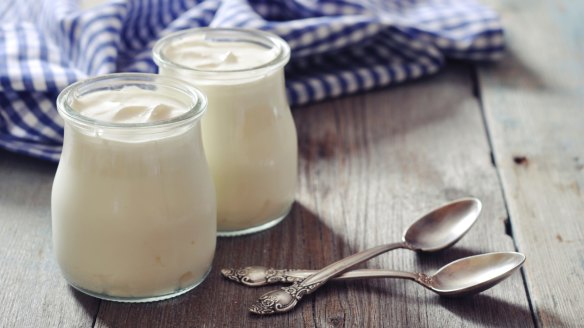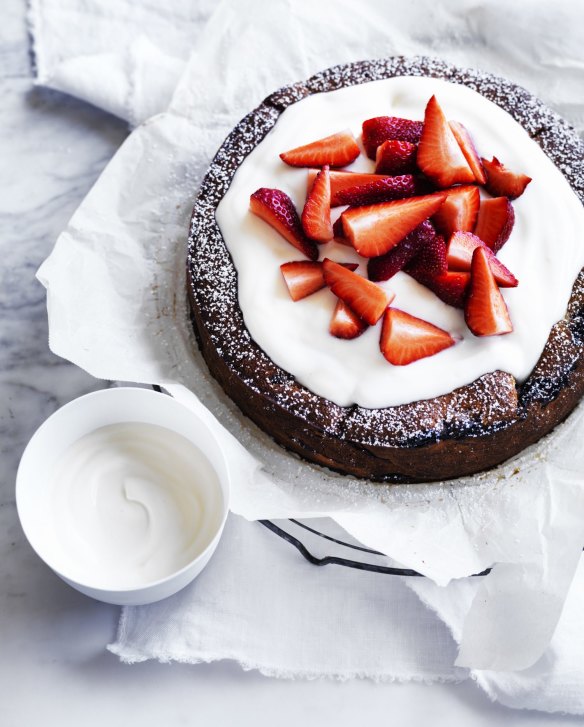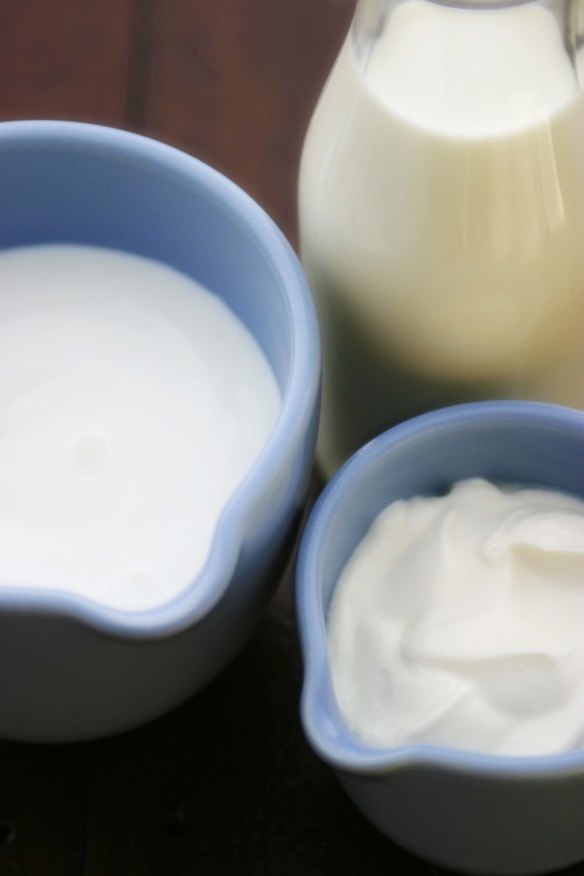Grab a spoon, it's time to make sense of yoghurt

Trend or no trend, I still eat a lot of yoghurt. I admit to succumbing to the tyranny of Greek yoghurt (particularly the non-fat stuff, much to my increasing regret) for far too long, but I've realised that there are so many more possibilities worth exploring. Here's how to make sense of what's out there.
Understanding yoghurt
Essentially, yoghurt is cream or milk combined with two bacteria, Lactobacillus bulgaricus and Streptococcus thermophilus. How fat content, acidity and sugar are manipulated differentiates what you see on the supermarket fridge shelves.
Dairy and fat
Whether yoghurt is made with cream, whole milk or low-fat milk affects how much fat is in it. Cow's milk is still No. 1, but you can also find sheep's and goat's milk yoghurt, as well as non-dairy options.
The cultures

The two bacteria cultures each encompass many strains. Manufacturers put together their own blends to adjust flavour, acidity and shelf life. Don't be too swayed by labels that include cultures other than the big two.
Acidity
Yoghurt is acidic, which is why it is characteristically tangy and tart. Some are more acidic than others, with traditional Bulgarian among the world's tartest.

Sugar
Many types of yoghurt have added sweeteners, but sugar is naturally occurring in dairy, too. The bacteria cultures change that sugar into tangy lactic acid, and longer-fermented yoghurts (info not generally on packaging) tend to have less sugar and more tart flavour for that reason.
Straining

If you wanted to strain yoghurt at home, you might use a cheesecloth or coffee filter. Manufacturers often use a spinner to separate the whey. More straining means less liquid and a thicker texture. Thicker strained yoghurts tend to have less sugar, because the sugar-containing whey, the liquid you sometimes see rise to the top of a container, is drained off (see also: Labna).
The types (and how to use them)
Now that you know what determines how a yoghurt looks, feels and tastes, let's talk about the specific types, which are often attached to different countries. "This United Nations of yoghurt options is exciting, but it can also make for a mind-boggling shopping experience," says dietitian and nutritionist Ellie Krieger.
You likely ate a good all-purpose or low-fat yoghurt before Greek yoghurt exploded on the scene. Something French-ish in style that's relatively thin and loose, with a nice balance between sweet and tart that's especially good for breakfast. You might find it too thin for some dips and sauces, which you can remedy by straining (or switching to Greek).
Greek yoghurt
Krieger points out that while straining is great for thickness, less sugar and more protein, you do lose some vitamins and nutrients. flavour-wise, it's not particularly tart, though it's a bit more acidic than traditional. Depending on the brand, you can get fluffy and creamy or grainy and chalky. Look for brands without added stabilisers or thickeners. After going for the non-fat option for a long time, I've gone in the opposite direction after realising I prefer the texture and flavour of whole-milk yoghurt (even if I eat less of it). Greek yoghurt is another good all-around option for eating out of hand or turning into sauces and dips.
Icelandic yoghurt
"There is debate as to whether skyr, an ancient staple in Iceland, should be called yoghurt or if it is really more of a cheese," Krieger says. "Because it is strained even more than Greek yoghurt, it is very thick and glossy, with the consistency and flavour undertone of a tangy, spoonable cheese." It skews so thick and creamy you may not realise you're eating a low-fat version, though it can be made with whole milk, too. Skyr is typically lightly sweetened, if at all. I'm happy to eat it straight out of the container. Try it with granola and in tzatziki.
'Australian' style
Krieger describes the thick and pot-set or creamy fruit-rippled tubs as "unstrained yoghurt with a creamy, velvety texture that tends to be very rich. The thing that really sets it apart is its indulgent, dessert-like quality and creative flavours that don't shy from sweetness." To me, that makes it a natural fit for eating on its own or in a parfait-type situation. It would also make a fine topper to a cake.
Non-dairy
Vegan yoghurt is one segment of the market that is continuing to grow, according to the Wall Street Journal. It's easy to be overwhelmed by the options in this category alone. Non-dairy yoghurts can be made from soy, coconut, flax, oat, almond and cashew milks. They can also be made just like dairy yoghurts and cultured with bacteria. Of course, you can eat them out of the container similar to the dairy stuff, but keep in mind they may not behave the same when cooked.
The Washington Post
- More:
- Food